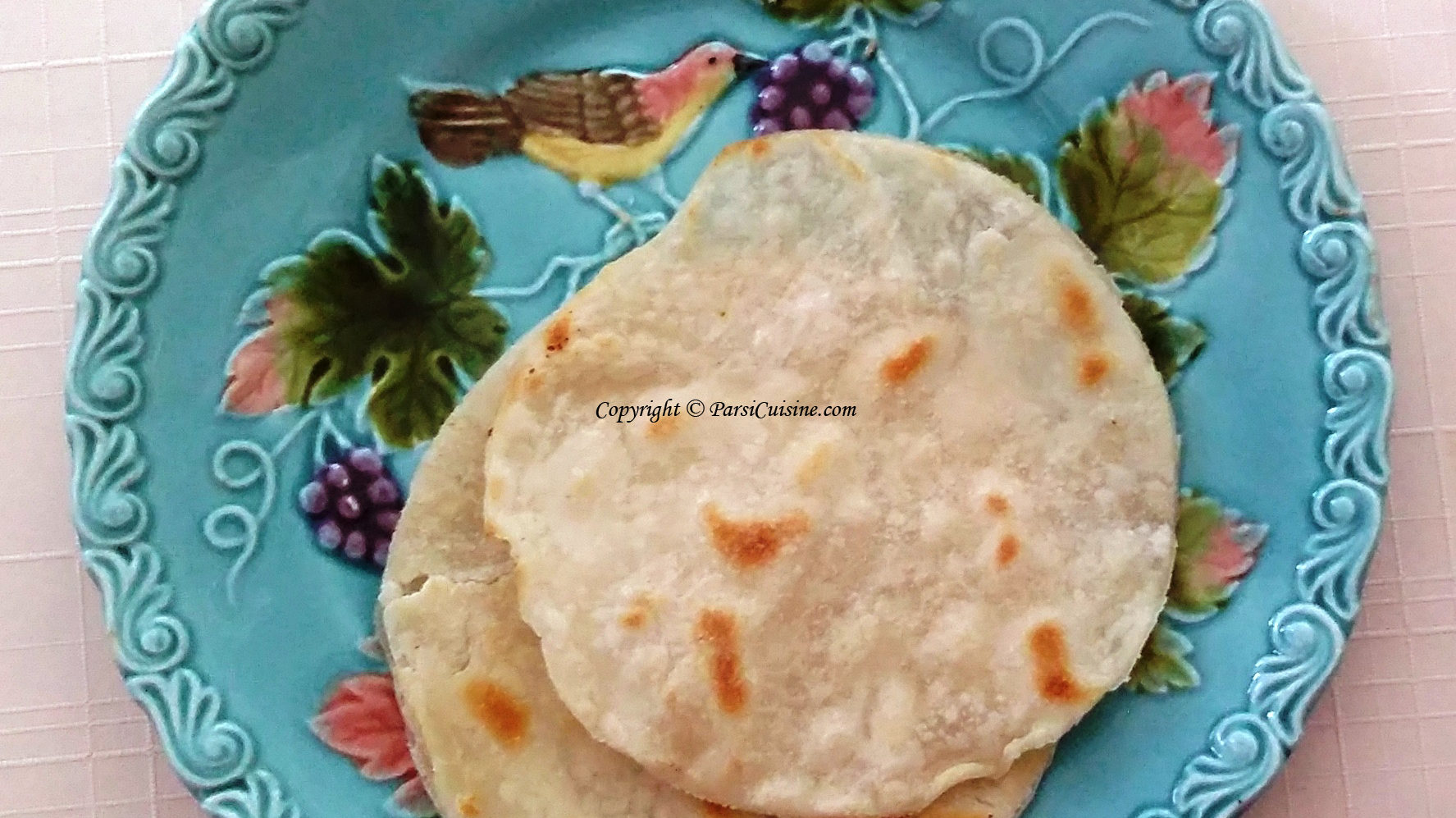
Rice Flour Rotli

Recipe tried and tested, translated from the Vividh Vani cookbook by Rita Kapadia
Chokha ni Rotli * or Rice Flour Rotli * is an age old bread enjoyed in India by the parsi community.
Yes, all rice (in its natural form) is gluten–free. This includes brown rice, white rice and wild rice. In this case, the “glutinous” term refers to the sticky nature of therice and not the gluten protein found in wheat, barley and rye. Rice is one of the most popular gluten–free grains for people with celiac disease.
The soft white rotlis are made with pure (Mill ground to number 1), a very fine ground rice flour and are very delicious to savor with meat dishes or spicy vegetables. In the rainy season they go well with the diet and are easy to digest.
How to make them is tricky, folks who make these do it so well one would think it is easy but no, it is not. I have seen the indian women and men make loads of this to serve for meals. Many people prefer white rice rotlis to the wheat ones for dietary reasons.
The trick is to knead the dough very well, the harder you knead the softer the rotli. So ladies and gentlemen get ready for some stress busting exercise with your palms and fingers!
*Also called “Roti”
I have translated this from the Vividh Vani Cookbook
There are 2 recipes for this Rotli. One is made with Milk and the other with Water. The milk rice rotli recipe will be coming up soon. Stay tuned.
Recipe with Water
Ingredients
1 cup Rice flour plus extra rice flour for dusting while rolling out the rotlis
3 tsp Ghee (optional)
1 cup boiling hot water
1/2 tsp Salt (optional)
Method
Normal dough method
-
Shift the rice flour and put in a flat container to make the dough. Typically a thali is used.
-
Make a pile of the flour with a pit in the center.
-
Boil the water piping hot with the salt and ghee.
-
Immediately pour this into the flour. Let the water mixture come up to the rim of the pit.
-
Keep this for 2 minutes to get absorbed and form the dough. Add more water if needed but do not let it get too runny.
-
Knead with both hands and palms. Wet your palms with water if needed. Knead to a soft dough.
-
Make small balls and dust with extra flour. Keep the balls covered with a damp cloth so they do not dry out.
-
Heat up a non stick pan or indian tava
-
Now start rolling out the rotli on a marble or a wooden patlo. Dust with rice flour to prevent sticking. Make it thick to start with, practice makes a perfect rotli eventually.
-
Put on the hot tava and bake for 10 seconds. Using a spatula or tavatha Flip and bake the other side for 30 seconds. Flip again (back to the first side) and puff the rotli.
-
In a clean Rotli Box, store the rotli in muslin cloth so it does not dry out. Any box will work, but a chapati box works the best for me. (See the chapati products from Amazon * below)
-
Serve immediately or keep for 1 day.
There are 2 techniques for this Rotli. One is made with a normal dough process and second which is called “Khichi”.
Khichi Dough Method
In a large pot, boil rice flour, salt, and ghee.
Cover pot and keep for 1 minute to form the khichi.
Turn out onto your counter and dust the flour, knead to a smooth dough. These khichi rotli come out very soft, white and fluffy. Since the dough is semi-cooked the rotli will always be cooked thoroughly.
Proceed to make the rotli balls and rotlis as described above.
Note: Vividh Vani mentions using Rangoon Rice Flour, Mill Rice Flour, Patni Rice Flour which were products from the Eighteenth Century and an Bygone Era. Please use the best and fine ground rice flour you can locate. Here are some examples of the amazon products.
*Disclosure – “We are a participant in the Amazon Services LLC Associates Program, an affiliate advertising program designed to provide a means for us to earn fees by linking to Amazon.com and affiliated sites.”

Megala
Jun 6, 2019, 1:41 amNever made roti using rice flour, it looks so soft & beautiful and I will definitely try this.
Kat (The Baking Explorer)
Jul 7, 2019, 3:21 pmI must try to make these one day
Tomato per eedu – Parsi Cuisine
Jan 1, 2020, 10:15 pm[…] When the eggs are firm to the touch, remove and serve with rotli. […]